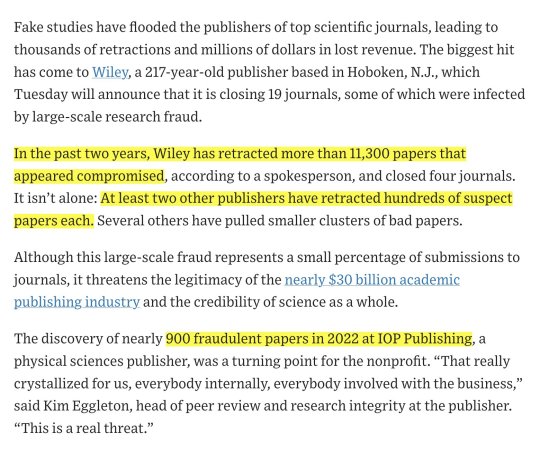#crystal wsj
Photo


season 4 LETS GO
#anh art#going to be selling this design as a double sided charm for vancaf#god i love this show#miku should have been the one singing the JP opening#wan sheng jie#all saints street#neil bowman#lily angel#lynn angel#luis bite#ira blood#damao#abu#nick holt#crystal wsj#momo wsj#hoping for crystle and ake for s4#PLEEK
37 notes
·
View notes
Text
al lsasints steret 🥺





i lvoe alll saints stereettttrahghghhhh
#guys help help help help hel#i feel like my fixations are tossing me around like im a ball#and also my sanity is the monkey in the middle n theyre bullying it#ive been mostly drawing momo..#all saints street#ive been infodumping so fkn hard in the discord i feel crazy#can i infodump here too#can i just like ramble#wan sheng jie#wsj#wsj momo#wsj crystal#i ship them but idk if they have a shipname n their names dont rlly mesh well wehhhh#just casually been calling them the idols in my head ngl#neil bowman#ira blood#wsj damao#wsj abu#luis bite#nick hoult#lily angel#lynn angel#i think i peaked at the end there with him tbh#my art#wehhhhh i love ass (the manhua n donghua series)#send ask abt wsj if you want if you want if wwwwwwwwwwwwwwwwwwwwwwwww ifor me maybe
155 notes
·
View notes
Text


I LOVE THIS SERIES AND ALL OF THE CHARACTERS SOOOOOO MUCHHHHHHH . I LOVE THE,MMMMMMM I AM INSANEEEEEEEEE
#art#my art#fanart#wsj#wan sheng jie#all saints street#nick hoult#lynn angel#ira blood#abu#damao#vladmir elliot kirilenko#momo#martha#luis bite#axel backer#evan angel#crystal#nina hoult#anna#I LOVE THEMMMMMMM
115 notes
·
View notes
Text

THEM🥺
168 notes
·
View notes
Text

New all saints Street soon!!
11 notes
·
View notes
Text
not to be annoying about some goofy animated show but like that did not feel like a finale like the other seasons did… also i hated that they turned him into a baby wtf was that about. unnecessary
#mileposting#wsj spoilers#not the ones abt summer camp those were cute#this isnt to say i didnt like the season. a lot of it was good. enjoyed it#but whyd they make that finale last like 3 of the 12 episodes. what happened to the good finales…#whatever some of it was cute. i liked seeing crystal and i thought the abu stuff was cute
9 notes
·
View notes
Text


Happy Birthday Sina Arnet! [28.07.2005]
#ski jumping#skijumpingedit#sina arnet#team switzerland#wsj#birthday post#moje#future crystal globe winner you've seen it here first#dunno why i think that it's just the ✨vibes✨
11 notes
·
View notes
Text
All Saints Street Profile Pictures












Phew. Okay I am sure this is the complete collection of all the avatar/profile pictures that have been released so far.
It includes:
2017 Paper Cups Set (Abu, Damao, Ira, Lily, Luis, Lynn, Momo, Nick)
2019 Flower Crown Set (Ira, Abu, Damao, Neil, Nick, Lily, Lynn)
2019 Year of the pig (Axel, Crystal, Damao, Ira, Lily, Lynn, Momo, Neil, Nick)
2019 Goodnight! Set (Abu, Crystal, Damao, Ira, Lily, Lynn, Momo, Neil, Nick)
2020 Christmas Set (Abu, Damao, Ira, Lily, Lynn, Neil, Nick, +2)
2020 Campus/School Set for Team Battle (Abi/Arm, Abu, Crystal, Damao, Ira, Lily, Lynn, Momo, Neil, Nick)
2020 Workers Day Set (Abi/Arm, Abu, Damao, Ira, Lily, Lynn, Momo, Neil, Nick)
2021 Arbor Day Dumplings Set (Lily, Lynn, Neil, Nick)
2021 Sailor Set for Team Battle (Axel, Crystal, Damao, Ira, Lynn, Momo, Neil, Nick, Will)
2022 Box Set (Lily, Lynn, Neil, Nick)
2022 Year of the Tiger (Ira, Damao, Neil, Nick, Lily, Lynn)
2023 Year of the Rabbit (Abu, Crystal, Damao, Evan, Ira, Lily, Luis, Lynn, Momo, Neil, Nick)
Here is the google Drive link with all of them:
Oh, by the way: Team Battle was a popularity contest event for all FRZ comics (Fei Ren Zai, There Are Beast and All Saints Street) characters. I'll talk about the WSJ character rankings another time. Right now, I am exhausted and will sign off.

Edit: Well, goddamit. This is why you don't work exhausted. I missed the first set of avatar/profile pictures made by Lingzi. You might recognize it from the eng twitter account using the Neil one. Uploaded them to the drive so it should be all of them for real now.
78 notes
·
View notes
Note
uh it's kinda hard not to call gay's resignation the product of racism when the loudest people gunning for it were white supremacists suddenly pretending they cared about antisemitism, not jews. this is chris rufo taking credit for the whole thing in wsj. https://www.wsj.com/articles/how-we-squeezed-harvard-claudine-gay-firing-dei-antisemitism-culture-war-a6843c4c
dude. i don’t have enough crayons to explain to you how nuance works. yes, white supremacists wanted her to resign. AT THE SAME TIME, she’s an antisemite refusing to offer the same protections to jewish students that she gives to every other kind of student, which is a failure to do her job and bigotry that deserves resignation. a fucking seagull could understand this.
it’s incredibly fucking telling right now that leftists weren’t just as loud demanding she resign for such blatant antisemitism and stupidity. it’s a crystal clear example of what’s wrong with american leftism and their wholehearted lack of care for jews and jewish safety. and instead of viewing it as a failure of the american left, all y’all see it as is a black woman getting fired. go fuck yourself.
#Asks#anonymoose#antisemitism#‘the loudest people calling’ shows who tf you’re listening to#you didn’t hear a single jew upset about it#but boy howdy you heard republicans#who gives a flying fuck what those pesky jews want!#it’s a black woman!#it’s not like there’s legitimate grounds for resignation
12 notes
·
View notes
Text


By: Nidhi Subbaraman
Published: May 14, 2024
Wiley will announce that it will shutter 19 more journals, some tainted by fraud.
Fake studies have flooded the publishers of top scientific journals leading to thousands of retractions and millions of dollars in lost revenue. The biggest hit has come to Wiley, a 217-year-old publisher based in Hoboken, N.J., which Tuesday will announce that it is closing 19 journals, some of which were infected by large-scale research fraud.
In the past two years, Wiley has retracted more than 11,300 papers that appeared compromised, according to a spokesperson, and closed four journals. It isn’t alone: At least two other publishers have retracted hundreds of suspect papers each. Several others have pulled smaller clusters of bad papers.
Although this large-scale fraud represents a small percentage of submissions to journals, it threatens the legitimacy of the nearly $30 billion academic publishing industry and the credibility of science as a whole.
The discovery of nearly 900 fraudulent papers in 2022 at IOP Publishing, a physical sciences publisher, was a turning point for the nonprofit. “That really crystallized for us, everybody internally, everybody involved with the business," said Kim Eggleton, head of peer review and research integrity at the publisher. “This is a real threat."
The sources of the fake science are “paper mills"—businesses or individuals that, for a price, will list a scientist as an author of a wholly or partially fabricated paper. The mill then submits the work, generally avoiding the most prestigious journals in favor of publications such as one-off special editions that might not undergo as thorough a review and where they have a better chance of getting bogus work published.
World-over, scientists are under pressure to publish in peer-reviewed journals—sometimes to win grants, other times as conditions for promotions. Researchers say this motivates people to cheat the system. Many journals charge a fee to authors to publish in them.
Problematic papers typically appear in batches of up to hundreds or even thousands within a publisher or journal. A signature move is to submit the same paper to multiple journals at once to maximize the chance of getting in, according to an industry trade group now monitoring the problem. Publishers say some fraudsters have even posed as academics to secure spots as guest editors for special issues and organizers of conferences, and then control the papers that are published there.
“The paper mill will find the weakest link and then exploit it mercilessly until someone notices," said Nick Wise, an engineer who has documented paper-mill advertisements on social media and posts examples regularly on X under the handle @author_for_sale.
The journal Science flagged the practice of buying authorship in 2013. The website Retraction Watch and independent researchers have since tracked paper mills through their advertisements and websites. Researchers say they have found them in multiple countries including Russia, Iran, Latvia, China and India. The mills solicit clients on social channels such as Telegram or Facebook, where they advertise the titles of studies they intend to submit, their fee and sometimes the journal they aim to infiltrate. Wise said he has seen costs ranging from as little as $50 to as much as $8,500.
When publishers become alert to the work, mills change their tactics.
“It’s like a virus mutating," said Dorothy Bishop, a psychologist at the University of Oxford, one of a multitude of researchers who track fraudulent science and has spotted suspected milled papers.
For Wiley, which publishes more than 2,000 journals, the problem came to light two years ago, shortly after it paid nearly $300 million for Hindawi, a company founded in Egypt in 1997 that included about 250 journals. In 2022, a little more than a year after the purchase, scientists online noticed peculiarities in dozens of studies from journals in the Hindawi family.
Scientific papers typically include citations that acknowledge work that informed the research, but the suspect papers included lists of irrelevant references. Multiple papers included technical-sounding passages inserted midway through, what Bishop called an “AI gobbledygook sandwich." Nearly identical contact emails in one cluster of studies were all registered to a university in China where few if any of the authors were based. It appeared that all came from the same source.
“The problem was much worse and much larger than anyone had realized," said David Bimler, a retired psychology researcher in Wellington, New Zealand, who started a spreadsheet of suspect Hindawi studies, which grew to thousands of entries.
Within weeks, Wiley said its Hindawi portfolio had been deeply hit.
Over the next year, in 2023, 19 Hindawi journals were delisted from a key database, Web of Science, that researchers use to find and cite papers relevant to their work, eroding the standing of the journals, whose influence is measured by how frequently its papers are cited by others. (One was later relisted.)
Wiley said it would shut down four that had been “heavily compromised by paper mills," and for months it paused publishing Hindawi special issues entirely as hundreds of papers were retracted. In December, Wiley interim President and Chief Executive Matthew Kissner warned investors of a $35 million to $40 million revenue drop for the 2024 fiscal year because of the problems with Hindawi.
According to Wiley, Tuesday’s closures are due to multiple factors, including a rebranding of the Hindawi journals and low submission rates to some titles. A company spokesperson acknowledged that some were affected by paper mills but declined to say how many. Eleven were among those that lost accreditation this past year on Web of Science.
“I don’t think that journal closures happen routinely," said Jodi Schneider, who studies scientific literature and publishing at the University of Illinois Urbana-Champaign.
The extent of the paper mill problem has been exposed by members of the scientific community who on their own have collected patterns in faked papers to recognize this fraud at scale and developed tools to help surface the work.
One of those tools, the “Problematic Paper Screener," run by Guillaume Cabanac, a computer-science researcher who studies scholarly publishing at the Université Toulouse III-Paul Sabatier in France, scans the breadth of the published literature, some 130 million papers, looking for a range of red flags including “tortured phrases."
Cabanac and his colleagues realized that researchers who wanted to avoid plagiarism detectors had swapped out key scientific terms for synonyms from automatic text generators, leading to comically misfit phrases. “Breast cancer" became “bosom peril"; “fluid dynamics" became “gooey stream"; “artificial intelligence" became “counterfeit consciousness." The tool is publicly available.
Another data scientist, Adam Day, built “The Papermill Alarm," a tool that uses large language models to spot signs of trouble in an article’s metadata, such as multiple suspect papers citing each other or using similar templates and simply altering minor experimental details. Publishers can pay to use the tool.
With the scale of the paper-mill problem coming into ever better focus, it has forced publishers to adjust their operations.
IOP Publishing has expanded teams doing systematic checks on papers and invested in software to document and record peer review steps beyond their journals.
Wiley has expanded its team working to spot bad papers and announced its version of a paper-mill detector that scans for patterns such as tortured phrases. “It’s a top three issue for us today," said Jay Flynn, executive vice president and general manager of research and learning, at Wiley.
Both Wiley and Springer Nature have beefed up their screening protocols for editors of special issues after seeing paper millers impersonate legitimate researchers to win such spots.
Springer Nature has rejected more than 8,000 papers from a suspected paper mill and is continuing to monitor its work, according to Chris Graf, the publisher’s research-integrity director.
The incursion of paper mills has also forced competing publishers to collaborate. A tool launched through STM, the trade group of publishers, now checks whether new submissions were submitted to multiple journals at once, according to Joris van Rossum, product director who leads the “STM Integrity Hub," launched in part to beat back paper mills. Last fall, STM added Day’s “The Papermill Alarm" to its suite of tools.
While publishers are fighting back with technology, paper mills are using the same kind of tools to stay ahead.
“Generative AI has just handed them a winning lottery ticket," Eggleton of IOP Publishing said. “They can do it really cheap, at scale, and the detection methods are not where we need them to be. I can only see that challenge increasing."
[ Via: mirror (turn off Javascript) ]
#Colin Wright#Nidhi Subbaraman#academic fraud#academic corruption#paper mill#Wiley#Springer Nature#fraud#religion is a mental illness
5 notes
·
View notes
Photo

WSJ. Magazine Innovator Awards | November 3, 2022
Brand: Judith Leiber Couture
Item: Slim Slide Crystal Evening Clutch Bag in “gold/black”
Availability Status: $2,495 on the Bergdorf Goodman U.S. website
Also worn with: Jason Wu Dress, Manolo Blahnik Sandals, Fernando Jorge Earrings, Fernando Jorge Bracelet
(credit tagged)
Photographer: Unknown (photo)
Stylist: Unknown
Hair Stylist: Tamara McNaughton
Makeup Artist: Virginia Young
#taylor hill#event#2022 event#2022#judith leiber#clutch#fashion model#victoria's secret model#vs model#celebrity fashion#celebrity style#fashion blog#fashion blogger
1 note
·
View note
Text

hi girlies
#momo#momo all saints street#crystal all saints street#crystal#artfart#All Saints Street#All Saints Street 1031#wan sheng jie#wsj#1031
472 notes
·
View notes
Text



baguette but three different versions because i couldn't settle on one
i hate these losers so much did you know that they occupy a normal amount of my brainspace

a lil close-up on the faces bc i really like lynn's expression hereasgghsfafgafsghafadfghashsahgdf
#yah 💪#happy halloween (im pretending its the 31st) i come bearing those two gays from that one halloween apartment#all saints street#i mean i want to tag ass and baguette but like.. i dont think i will...#wan sheng jie#wsj#lynn angel#nick hoult#lynnick#uhh#my art#eyestrain#second piece i finished today i need to wring out my bones n muscles and spin them around. esp my neck help#do you ever imagine them with accents matching their whats the word w-.. cus i cackle at the thought of aussie nick... hes so special to me#canadian lynn..... briTISH IRA???? ? PLS thats soJKSADHJJASJFJHaf swEDISH CRYSTAL I NEED TAHT IN MY LIFE THO ?? russian damao so real
299 notes
·
View notes
Photo

Shivaruby for WSJ Magazine, by Nadine Ijewere (Fall 2021).
#wsj magazine#WSJ#fashion photography#photography#fashion#crystals#shivaruby#fall 2021#bodysuit#model#nadine ijewere#editorial
8 notes
·
View notes
Text
I’ve been sitting on it for a while and I don’t think that the reason this is happening to TPN is because of the female protagonist. At least not the only reason.
It might be the dropped ratings during the serialization in WSJ (tried to find a source but nobody I found compiled all weekly ratings and I’m too lazy - so this may not be the case at all, I just heard it in some community convos) or/and that they just didn’t want to have to adapt a whole 150 more chapters.
Runtime / Assuming they’ll do roughly 40 each season like s1, that’s 4 more seasons, maybe 5 if they want to flesh the last stretch out as some people had hoped, which would be another.... like 6 years of runtime until it’s done, if they need 1,5 years for every season (as the head of CloverWorks said in Joey’s interview). Even if we say like 2-2,5 years for two 24-ep seasons, it’s still about 4-5 years) This is all based on knowledge I’ve heard and I haven’t read the manga.
I can’t recall any anime production going this far after the manga already ended, but I’m also not on top of every manga in existence.
Like... BNHA Manga, which keeps getting more seasons, is still ongoing. Literally the biggest / most mainstream anime right now, Attack On Titan, also still has an ongoing manga as the final season is happening AND on top of that the committee/publisher literally forced whatever studio to finish it on tought deadlines until now - that’s why WIT dropped it.
“The staff overworked to meet Kodansha’s deadlines.” [x]
It seems to be a big deal that the manga is still ongoing.
Funny because apparently, the anime wasn’t told the ending so now the final season isn’t even the final season and they’ll probably adapt the ending in a movie or final season part 2 (that’s so funny to me please). LIKE WHAT IS THAT? why couldn’t they wait for the manga to complete or pace it so they’d have the time to do the ending too? Clearly ongoing manga is a big deal.
Counter Examples / I do think the haikyuu manga ended last year and I think the anime is still continuing but I’m not deep enough into it to know if that was/is the last season or if it’s a full adaption.
Demon Slayer also ended and it’s getting a second season. But Demon Slayer is also really big and the movie brought in a lot of money if I remember correctly. And it did end in May 2020, that’s true, so it’s been a while, but HAVE YOU SEEN THOSE SALES CHARTS. DS is too big internationally, it could probably carry itself through all that. It’s also a lot more action-y and lends itself to “epic” merch, so... yeah.
Beastars I think is also done, but S2 is happening right now and we’ll see if we get more - but since Netflix is involved who are pretty disconnected from the overall anime industry and mostly want stuff for their catalog, I think as long as the SHOW itself does well, we won’t have to worry. So I don’t think it’s fair to compare that here.
There’s also the remakes, like FMA:BH, Fruits basket and Sailor Moon Crystal, one of which is.... not that good; and for the others,,, yeah I don’t really know how economy works but I could imagine either a “re-birth” for Merch or the brand overall or just.... passionate people who wanted to see it re-done. I know for SMC, the author herself provided some if not all of the budget iirc.
.
TLDR; we cannot blame it solely on misogyny, I think. It sadly is just relevancy to the overall brand (hype is biggest when everyone is either engaged in the brand by anime or manga, manga falls away because it’s finished, and then it depends on the producers and other people to be engaged enough to carry on, possibly for years more). TBH, Anime industry kinda cringe. I rest my.... thoughts.
19 notes
·
View notes
